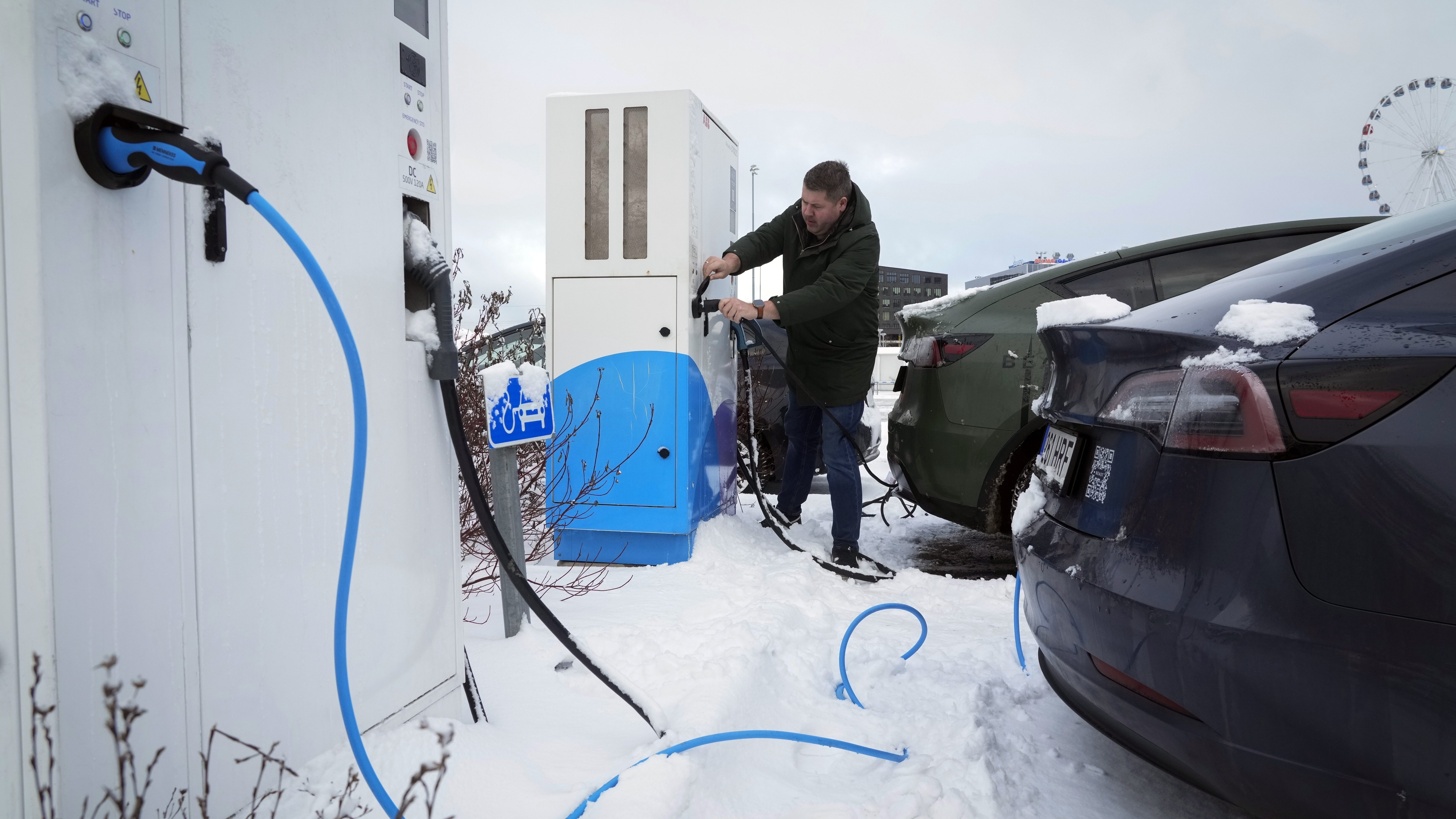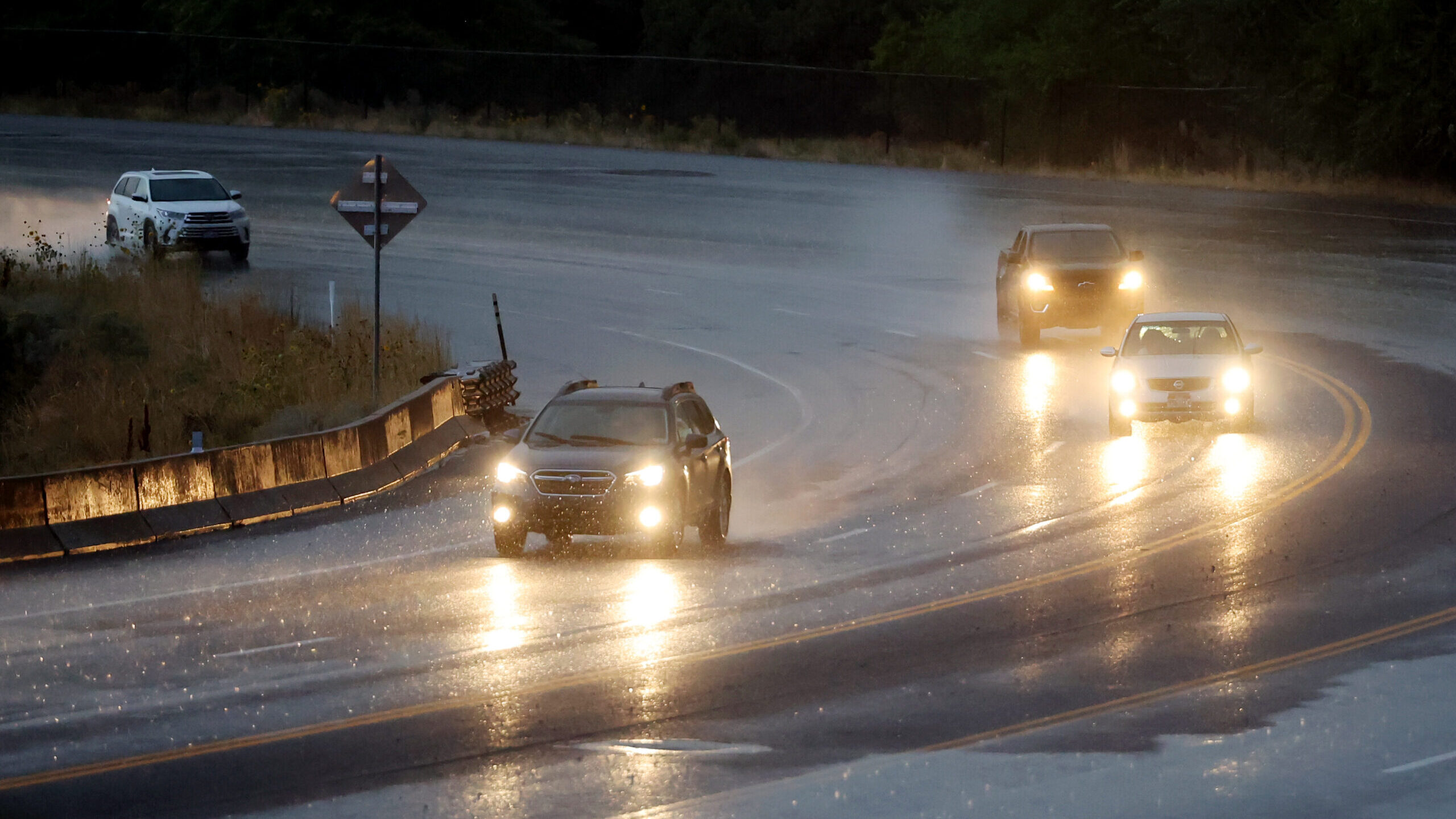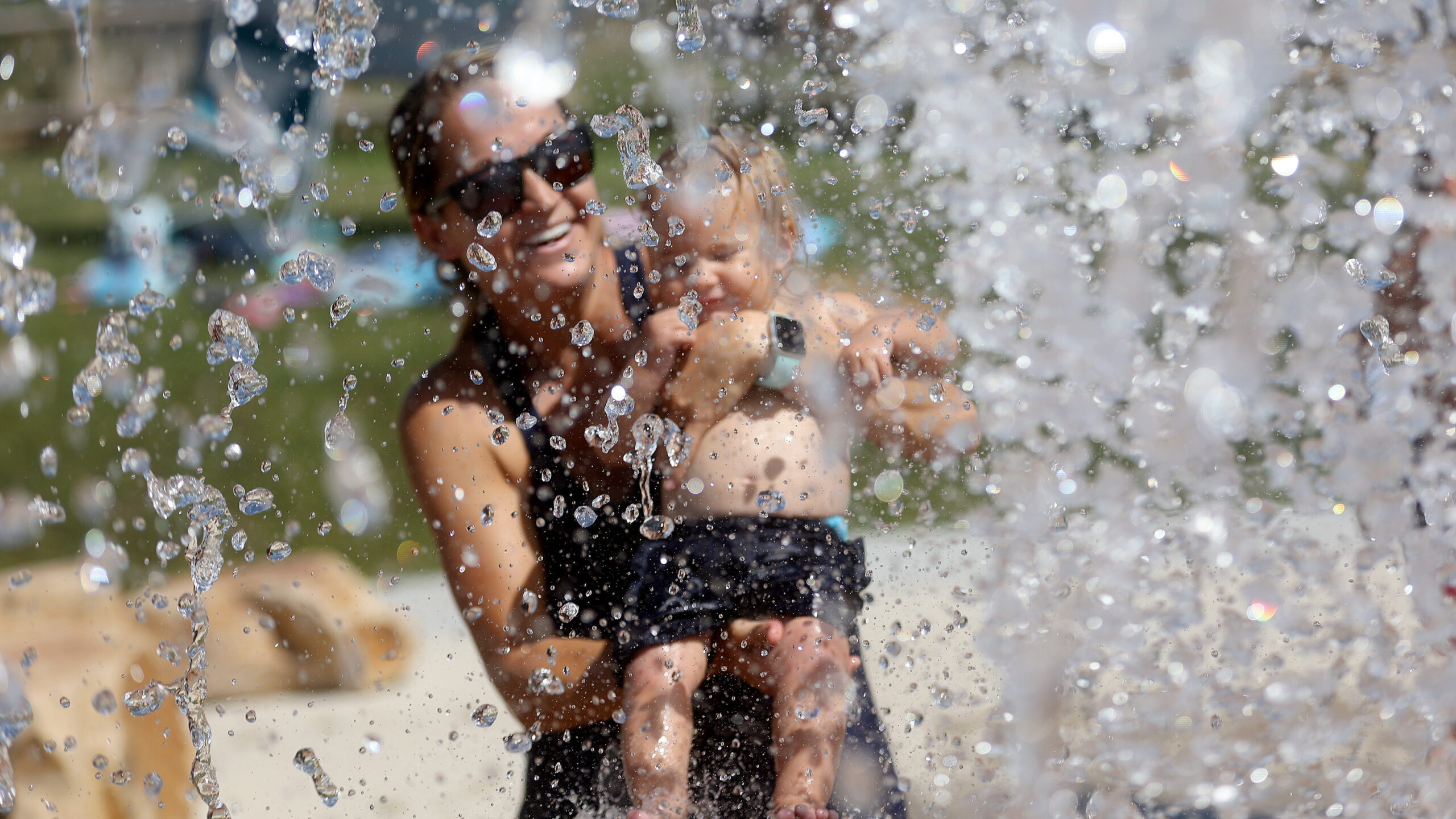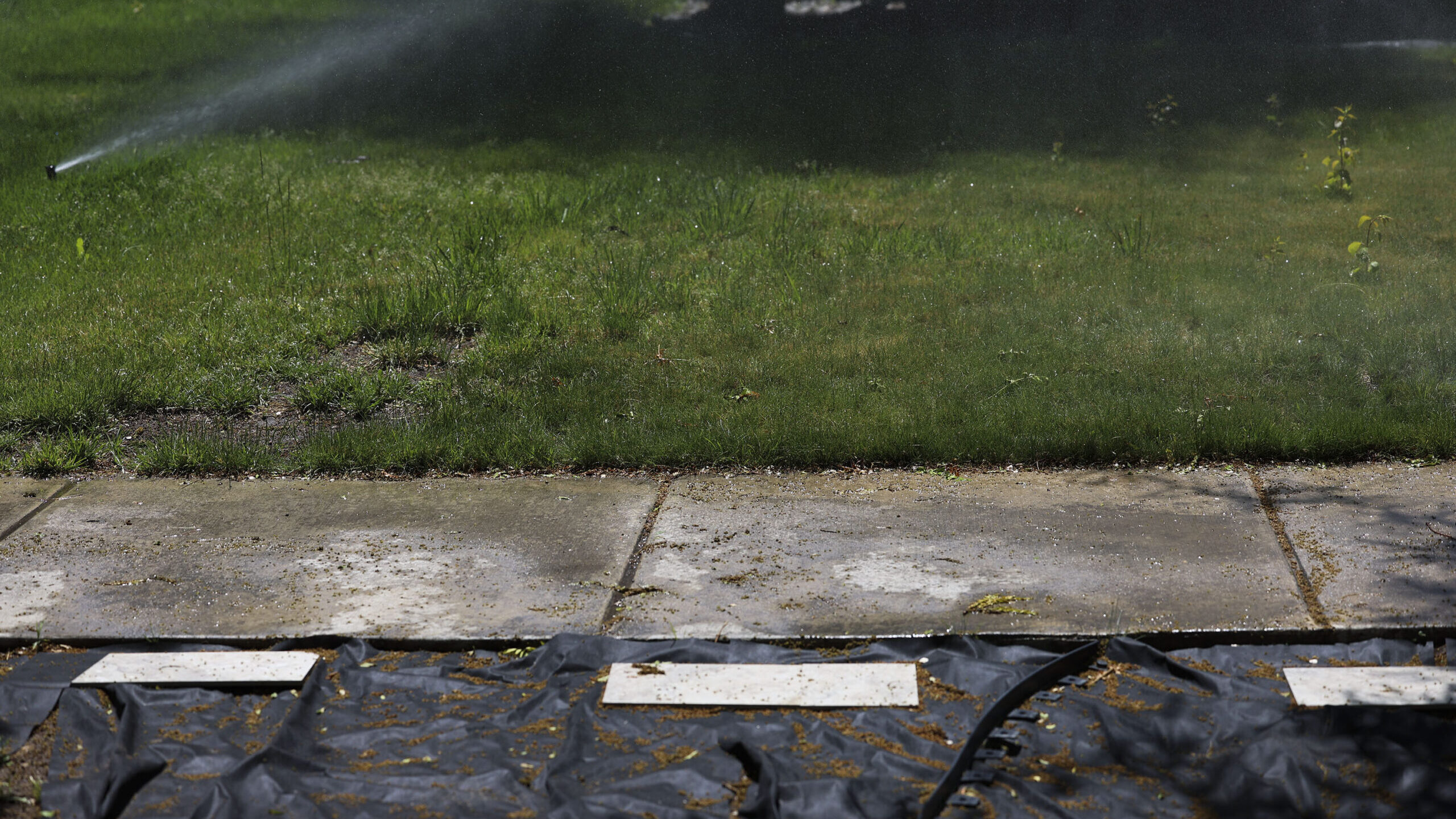In dead of winter, cold batteries in electric vehicles struggle to stay alive
Jan 19, 2024, 6:30 AM

A driver charges an electric car at a parking lot of a shopping mall in Tallinn, Estonia, Saturday, Feb. 11, 2023. (AP Photo/Sergei Grits)
Credit: ASSOCIATED PRESS
(AP Photo/Sergei Grits)
SALT LAKE CITY — As arctic cold sweeps down from Canada and across the Midwest, drivers of electric vehicles are learning that the extreme winter gives their batteries the cold shoulder by reducing their range and increasing charging time.
For example, in Chicago, charging stations have essentially turned into car graveyards in recent days as temperatures have dropped to the negative double digits.
Severe cold degrades electric vehicle batteries
ABC News Technology reporter Mike Dobuski discusses the latest details and tips on how to save an EV battery life.
In colder regions, EVs can lose up to 30 percent of their efficiency and range, Dobuski said.
An EV with a 200- to 215-mile range may only travel 150 to 175 miles in the cold but that reduced mileage is often sufficient for most drivers, Scott Case, co-founder and CEO of Recurrent, a battery research firm, told CBS MoneyWatch.
Also, it takes longer to charge an EV battery when it is frigid outside.
“I’ve been here for over five hours at this point, and I still have not gotten to charge my car,” Tesla driver Brandon Welbourne told CBS Chicago. “A charge that should take 45 minutes is taking two hours.”
Dobuski said it’s important to put the twin battery-charging issues into context.
“The average EV driver only drives about 30 miles a day,” he said. So even if your EV battery can only hold 70 percent of a full charge in freezing weather, that still is enough to drive about 130 miles before recharging.
Dobuski added EVs are popular in cold regions of the world, such as Norway, where almost 25% of all registered vehicles in July 2023 were plug-in.
“In Norway, EVs make up the vast majority of new-car sales. We don’t really hear about problems with the EVs over there and that’s largely because their charging infrastructure is a lot more robust. We are in the early stages of the EV transition here, particularly when we’re talking about public charging infrastructure.
Mariordo (Mario Roberto Durán Ortiz)
Be prepared for driving in cold
Dobuski pointed out Tesla features a webpage dedicated to cold weather driving, which recommends EV drivers leave their vehicles plugged in whenever possible and keep the charge level above 20% when not plugged in, which will reduce the impact of cold temperatures.
Tesla owners can schedule their departures, which “allow the vehicle to prepare itself by determining the best time to start charging and preconditioning,” bringing the EV to the desired charging level and cabin temperature.
Tesla advises drivers to use their navigation feature to travel to each charger or to the driver’s ultimate destination.
“Many EV drivers — the vast majority of them — charge at home as opposed to relying on public charging infrastructure,” Dobuski said. “Well, even if you’re going home, Tesla says you should program that into your GPS because that means the car knows that is about to go receive a charge, and it can go through that preconditioning process, and you won’t degrade your battery as fast.”
Related: Sheet of ice flies through car’s windshield, injuring driver
Dave & Dujanovic can be heard weekdays from 9 a.m. to noon. on KSL NewsRadio. Users can find the show on the KSL NewsRadio website and app, as well as Apple Podcasts and Google Play.














